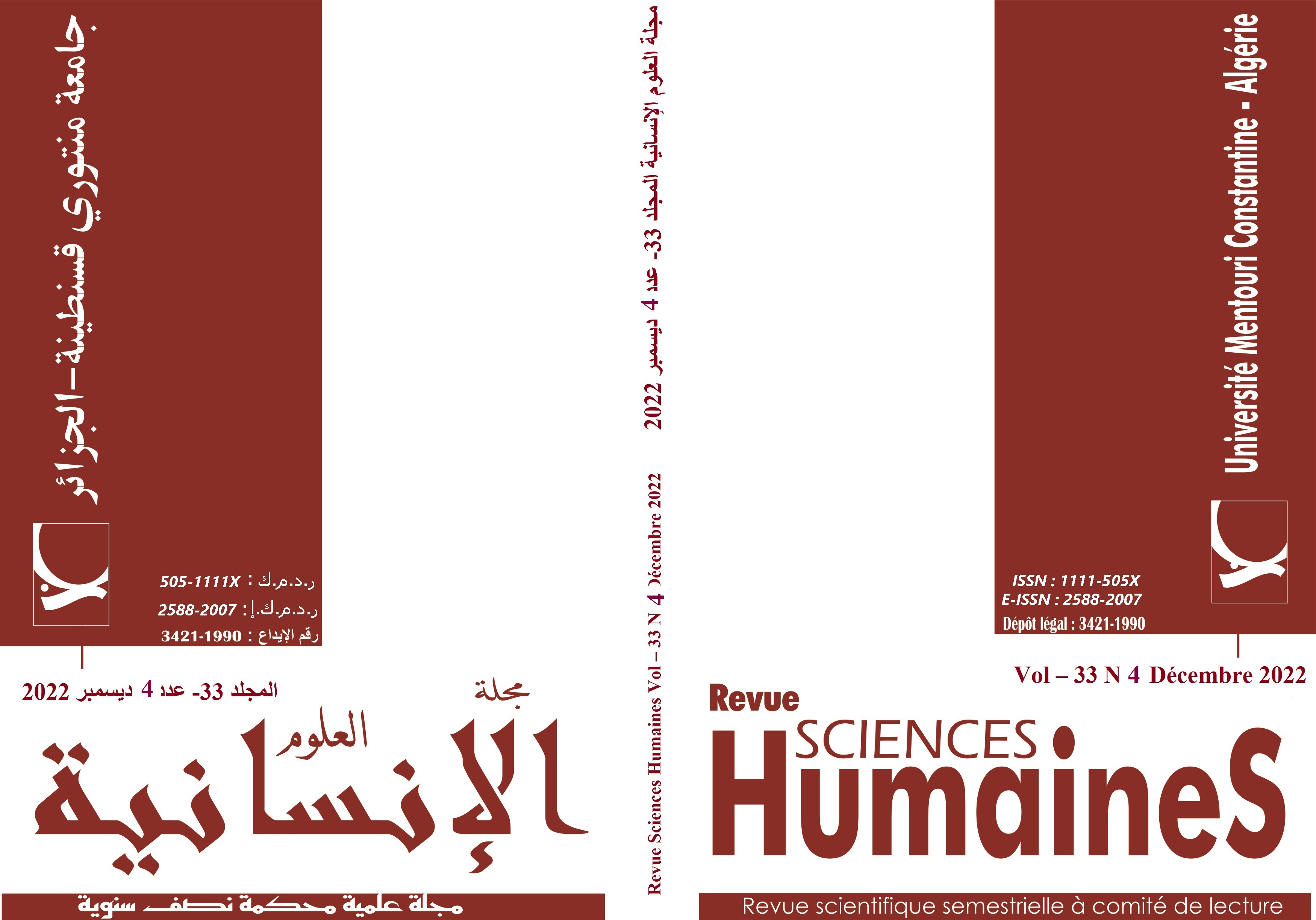Hedges in Biology Research Articles:
What Types and Frequency do Algerian Authors Use ?
Keywords:
Hedges, research article genre, Algerian biologists, type and frequencyAbstract
This paper aims at examining the use of hedging by Algerian scientists in the research article genre. To this end, a corpus of 31 articles, extracted from 5 Algerian locally published journals in the field of biology was analysed in terms of type, frequency and distribution of hedges across the research article sections. The quantitative analysis indicates that Algerian biologists employ different types of hedges with different proportions. However, main verbs’ category is the most prominent type of hedges in this data. Specifically, non-factive reporting sub-class of verbs is the highest over all other types of hedges. Algerian biologists seem to rely heavily on these verbs as strategical devices to provide support and further evidence to their own findings. Implications of this study can help placing hedging competence as an important rhetorical skill within the context of teaching scientific English.
Downloads
References
. Hyland, K. (1998). Hedging in scientific research articles. Amsterdam: John Benjamins.. http://doi.org/10.1075/pbns.54
. Blissett, M. (1972). Politics in Science. Boston: Little, Brown and Co.
. Hinkel, E. (2003). Adverbial markers and tone in L1 and L2 students' writings. Journal of Pragmatics, 1049-1068.
. Zadeh, L. A. (1965). Fuzzy Sets. Information and Control, 8 (3), 338-353.
. Lakoff, G. (1972). Hedges: A study in meaning criteria and the logic of fuzzy concepts. Chicago Linguistic Society Papers, 8, (183-228).
. Zuck, J. & Zuck, L. (1986). Hedging in news writing. In A. M. Cornu, J. Vanparijs, & M. Delahaye (Eds.) Beads or Bracelet: How Do We approach LSP? 172-181. Leuven, Belgium: Oxford University Press.
. Crismore, A., & William J. Vande Kopple. 1988. Readers’ learning from prose. The effects of hedges. Written Communication, 5(2), 184–202.
. Crompton, P. (1997). Hedging in academic writing: Some theoretical problems. English for Specific Purposes, 16 (4). 271-287. Retrieved from: https://www.academia.edu/478555
. Brown, P., & Levinson, S. (1987). Politeness: Some universals in language usage. Great Britain: Cambridge University Press.
. Salager-Meyer, Françoise. 1994. Hedges and textual communicative function in medical English written discourse. English for Specific Purposes, 13(2), 149–170.
. Hyland, K. (1996). Talking to academy: Forms of hedging in science research articles. Written Communication, 13(2), 251-281. Retrieved from :http://dx.doi.org/10.1093/applin/17.4.433
. Markkanen, R., & Schröder, H. (1997). Hedging: A challenge for pragmatics and discourse analysis. In Markkanen, R. & Schröder, H, (Eds.), Hedging and discourse: Approaches to the analysis of a pragmatic phenomenon in academic texts (pp.3-18). Berlin /New York: Walter de Gruyter.
. Nash, W. (1990). Introduction: The stuff these people write. The Writing Scholar: Studies in academic discourse, 8-30.
. Butler, C. (1990). Qualifications in science: Modal meanings in scientific texts. In W. Nash. (Ed), The Writing Scholar: Studies in academic discourse (pp.137-170). Newbury park, Ca: Sage.
. Falahati, R. (2004). A contrastive study of hedging in English and Farsi academic discourse. M.A thesis. Tehran University, Tehran, Iran.
. Martin-Martin, P. (2008). The mitigation of scientific claims in research papers: A comparative study. International Journal of English Studies, 8, 133-152.
. ElMalik, A.T. and Nesi, H. (2008). Publishing research in a second language: the case of Sudanese contributors to international medical journals. Journal of English for Academic Purposes, 7, pp. 87-96.
. Nasiri, S. (2012). Utilization of hedging devices by American and Iranian researchers in the field of civil engineering. International Journal of Linguistics, 4(2), pp-124-133
. Anthony, L. (2019). [Free computer Software Tool]. Centre for English language education in science and engineering. Waseda University: Tokyo. Retrieved February, 2019 from http://www.laurenceanthony.net
. Varttala, Teppo. (2001). Hedging in scientifically oriented discourse: Exploring variation according to discipline and intended audience. (Doctoral Dissertation). University of Tampere, Tampere, Finland). Retrieved from: http://acta.uta.fi//pdf/951-44-5195-3.pdf
. Hyland, Ken. (2008). Genre and academic writing in the disciplines. Language Teaching 41(4): 543-62.
. Hykes, J.M. ( 2000). A comparison of the use of modal verbs in research article professionals and non-native speaking graduate students. Master Thesis, Iowa State University).
. Yang, Y. (2013). Exploring linguistic and cultural variations in the use of hedges in English and Chinese scientific discourse. Journal of Pragmatics, 50(1), 23-36.
. Hyland, K. (1995). The author in the text: Hedging scientific writing. Hong-kong Papers in Linguistics and Language Teaching. 18: 33-42.
Downloads
Published
How to Cite
Issue
Section
License
Copyright (c) 2023 Human Sciences Journal

This work is licensed under a Creative Commons Attribution-NonCommercial-NoDerivatives 4.0 International License.

















